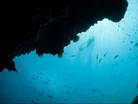The impact of Tasmania's new autonomous underwater vehicle (AUV) facility

In a move that will assuredly improve the nation’s capabilities in marine research, the Autonomous Underwater Vehicle (AUV) has announced its headquarters will be located in Tasmania.
Australia’s $750,000 advanced facility will be stationed at the University of Tasmania’s Australian Maritime College. AMC Principal Professor Neil Bose believes the development will bring a range of social and economic benefits to the region.
RELATED TOPIC: How autonomous vehicles are helping Rio Tinto and BHP Billiton get ahead
“This is an exciting new development for AMC, the University and the state of Tasmania,” said Bose. “It will be unique within Australia and one of just a handful of comparable facilities globally, allowing us to be on the cutting-edge of research in this field.”
AUVs are used to perform underwater survey missions, including of submerged wrecks as well as obstructions that make it difficult to navigate the waters. Once the job is completed, the AUV can download and process the data.
RELATED TOPIC: Volvo's driverless car trials could give big boost to SA economy
It has recently been vital to the continued search for wreckage of the missing Malaysia Airlines flight MH370.
The highlight of the new AUV centre will be its advanced data collection facilities in oceanic research. It will not only oversee the development of first-world underwater technology and survey techniques, but also strengthen Australia’s reputation for tech innovations on the global scale.
RELATED TOPIC: [Video] BioPower's bioWAVE project off Australian coast is almost ready
“Building our underwater robotic research capabilities not only enhances our reputation on the international stage, it also helps stimulate the local economy through the recruitment of specialist personnel and the use of a local architectural firm and other related industries,” said Bose.
The $24 million Antarctic Gateway Partnership has already begun developing answers to the challenges of venturing far below ice-covered waters. A special research initiative of the Australian Research Council, the partnership is attempting to further study the Antarctic’s role in the world’s climate.
RELATED TOPIC: Royal Melbourne Hospital's bionic spine set to help paralyzed patients
“There really are only a few of these types of facilities in the works, so it’s really putting us into a select group,” said project coordinator Peter King. “AUVs have come along now as the cutting edge for ocean-based science and data collection and survey, particularly when you get into the under-ice realms.”
Check out the latest edition of Business Review Australia!





